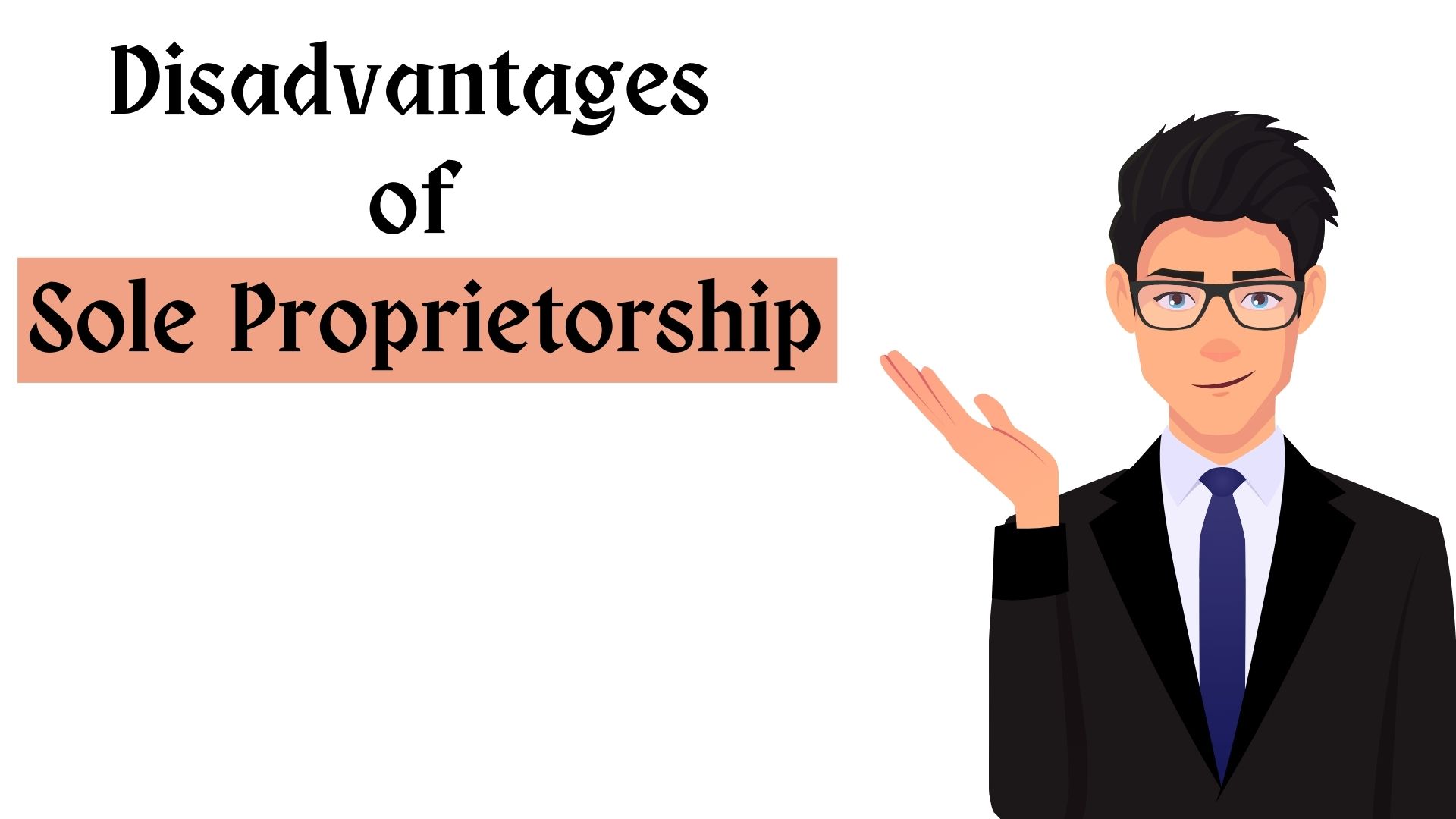A sole proprietorship is a popular business structure,
especially among small business owners, freelancers, and individuals who are
just starting their entrepreneurial journey. This business model is appealing due
to its simplicity, direct control, and minimal regulatory burden. However,
despite its advantages, a sole proprietorship also comes with several
significant disadvantages that can affect long-term sustainability and growth.
In this article, we will delve into the key drawbacks of operating as a sole
proprietor.
1. Unlimited Personal
Liability
One of the most significant disadvantages of a sole
proprietorship is the issue of unlimited personal liability. In this business
structure, there is no legal distinction between the owner and the business.
This means that the owner is personally responsible for all the debts and
obligations of the business. If the business incurs debt or faces a lawsuit,
the owner's personal assets, such as their home, car, and savings, can be at
risk. This unlimited liability poses a substantial financial risk, particularly
in industries with higher chances of legal issues or substantial debt.
2. Limited Access to
Capital
Raising capital is often crucial for business expansion and
sustainability. Sole proprietorships typically face significant challenges in
this area. Since the business is not a separate legal entity, it cannot sell
stock or issue bonds, limiting its ability to attract investment. Financing
options are often limited to personal savings, personal loans, or credit cards,
which might not be sufficient for significant growth or to weather financial
downturns. Additionally, lenders and investors might be hesitant to provide
funds due to the perceived risk associated with a business structure that lacks
a formal separation between personal and business finances.
3. Lack of Continuity
Another drawback of sole proprietorships is the lack of
continuity. The business is closely tied to the owner, meaning that it ceases
to exist if the owner retires, becomes incapacitated, or dies. This lack of
continuity can make it challenging to build a long-lasting business and can
deter potential customers, employees, and investors who seek stability and
longevity. Succession planning is also more complicated, as transferring
ownership to another party often requires dissolving the existing business and
establishing a new entity.
4. Limited Managerial
Expertise
Running a business requires a diverse set of skills and
knowledge. In a sole proprietorship, the owner is solely responsible for all
aspects of the business, from marketing and sales to accounting and operations.
This can be overwhelming and may lead to inefficiencies or mistakes if the
owner lacks expertise in certain areas. Unlike larger business structures, sole
proprietorships cannot easily hire specialized managers or consultants due to
budget constraints, making it difficult to compete with businesses that have
more resources and specialized personnel.
5. Heavy Workload and
Stress
The comprehensive responsibility placed on the sole
proprietor can lead to a heavy workload and significant stress. Managing every
aspect of the business often requires long hours and a high level of
dedication, which can take a toll on the owner's physical and mental health.
The lack of a support system or the ability to delegate tasks can exacerbate
this issue, leading to burnout and potentially impacting the quality of the
business operations and decision-making processes.
6. Difficulty in
Building Business Credit
Building a strong business credit profile is essential for
securing favorable financing terms and establishing credibility with suppliers
and customers. In a sole proprietorship, the business credit is closely linked
to the owner's personal credit. This connection can make it challenging to
separate personal and business finances and can negatively impact the owner's
personal credit score if the business experiences financial difficulties.
Additionally, establishing a separate business credit history is more difficult
in this structure, limiting opportunities for growth and expansion.
7. Limited Growth
Potential
Sole proprietorships often face limitations in terms of
growth potential. The reliance on personal resources and the challenges in
attracting external investment can constrain the ability to scale the business.
Furthermore, the lack of continuity and difficulty in hiring skilled personnel
can hinder long-term growth strategies. Many sole proprietors find it
challenging to transition to a larger business model, limiting their ability to
compete with more established companies.
8. Tax Disadvantages
While sole proprietorships benefit from simplified tax
filing processes, they also face certain tax disadvantages. The business income
is reported on the owner's personal tax return, which can result in a higher
tax liability, especially if the business is profitable. Sole proprietors are
also subject to self-employment taxes, which cover Social Security and Medicare
contributions. These taxes can be substantial and may not be as advantageous as
the tax benefits available to other business structures, such as corporations
or limited liability companies (LLCs), which can benefit from lower corporate
tax rates and additional deductions.
Conclusion
While a sole proprietorship offers simplicity and direct
control, it is essential for potential business owners to carefully consider
the disadvantages before choosing this business structure. Unlimited personal
liability, limited access to capital, lack of continuity, and other significant
drawbacks can pose substantial risks and challenges. For those seeking
long-term growth, stability, and protection of personal assets, exploring
alternative business structures such as partnerships, LLCs, or corporations
might be a more suitable option. By weighing the pros and cons, entrepreneurs
can make informed decisions that align with their business goals and personal
circumstances.

